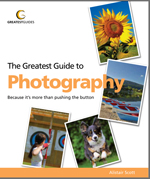Starting out with Macrophotography

Macrophotograph of a Day Lily at dawn
Macrophotography is ultra close-up photography.
A lot of lenses have a ‘macro’ setting for taking photographs from much closer to a subject.
It’s a great facility. Being able to photograph things from no more than a few centimetres away gives you a whole new view of the world.
But let me be a little pedantic here. ‘Close-up’ isn’t the same as ‘macro’. True macrophotography is when the image on the camera’s sensor (or film) is reproduced at the same size as in real life. This is known as a 1:1 reproduction ratio.
In other words, if the sensor inside your camera is the size of a postage stamp, and you use a true macro lens to photograph a postage stamp, it will fill the image completely.
True macro photography can be done in a variety of ways:
- By fitting an additional close-up lens (or lenses) to the front of your existing lens.
- By using a special adaptor that allows you to put your existing lens on your camera backwards. However, take care, not all lenses can be used for macro-photography when reversed. Also, in many cases you will lose all automatic features when the lens is on backwards (though there are adaptors which allow you to retain these features.)
- Using bellows or extension tubes which increase the distance of the lens from the camera body, so allowing you to focus closer.
- With a dedicated macro lens.
Out of all these techniques, buying a true macro lens is the best option.
More details about the technique, and images of the equipment used can be found in a Wikipedia article on it, here.

What do you think?
(Please note: though your email address is required to control spam, it will not be shown or re-used in any way)
You must be logged in to post a comment.